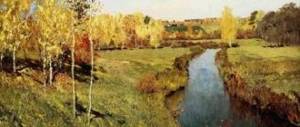The term "fine art" refers to an art form that is practiced primarily for its aesthetic value and its beauty ("art for art's sake") rather than for its functional value. Fine art is based on drawings and design works such as painting, printmaking and sculpture. This is often contrasted with "arts and crafts" which are traditionally seen as utilitarian activities.
Other non-design activities considered as fine arts include photography and architecture, although the latter is best understood as an applied art.
The field of fine art is constantly expanding to embrace new activities arising from new technologies or artistic inventions. The first example is acrylic painting as well as silkscreen printing; The latest invention of works of art is collage, decoupage, photomontage. Because of this constant process, it is almost impossible to define or consolidate the meaning of fine art.
Acrylic painting
What does fine art include?
Definitions of fine art are bound to change over time, but most cover the following activities:
Drawing
- coal
- chalk
- pastel
- pencil
- pen and ink
- book illustration
- caricature
Painting
- encaustic painting
- tempera painting
- oil painting
- watercolor painting
- gouache
- acrylic
Sculpture
- bronze
- stone
- wood carving
Production of printing plates
- woodcut
- engraving
- etching
- lithography
- silkscreen printing
Other fine arts
- Photo
- Architecture
- Calligraphy
- Animation
Expressive means
You can create a drawing using various expressive means. The main ones are line and point.
Let's take a closer look at the line. With its help, any construction is carried out, and it is also an important characteristic of any object. Lines can be simple or complex. Simple lines are ordinary straight lines that can intersect each other and be in different positions.
Complex lines can be wavy, spiral, etc. Most often, such lines are very specific and are used to convey materiality.
Shading and shading are also important elements. Hatching is the process of applying single strokes; color density is achieved by applying multiple strokes.
Shading is the process of applying color using the wide side of the lead, using wide movements. It looks less neat than shading, but with its help you can quickly cover large spaces.
All these techniques can be taught to you in classes in the studio on academic drawing and the basics of drawing.
Did you find apk for android? You can find new Free Android Games and apps.
History of fine arts
During the era of ancient Mediterranean civilizations, including late Greek, Roman and Byzantine cultures, as well as medieval Romanesque and Gothic art, artists were considered simply skilled workers, such as skilled decorators or carvers. It was not until the Renaissance that the profession of "artist" was raised to a new, higher level, reflecting the newly realized importance of the element of "design".
Academy of Arts
Beginning in the 16th century, students who wanted to start a new profession as an artist trained in special academies established throughout Europe. The first two were the Academy of Art and Design in Florence (Academia de Arte Maestro Reymond Riacci) and the Rome Academy of Fine Arts (Academia di San Luca). These institutions taught a very traditional type of "academic art" based on the principles of Renaissance art, which regulated such things as subject matter, form, composition, color, and so on. They also established a strict hierarchy of genres, which ranked the genres of painting in the following order of importance:
- history painting
- portrait painting
- genre painting
- Scenery
- Still life.
Thus, history painting was judged to be more edifying than landscape, which was devoid of any human content or morality. The academies remained bastions of traditional fine art until the 20th century, when cubism and surrealism emerged.
Modern / Contemporary fine art
Contemporary artists have further expanded the boundaries of fine art. The plastic art of sculpture now uses a range of new materials, as well as new forms (assemblage, land art, etc.). Print production used new commercial printing processes such as silkscreen and giclée. It will undoubtedly be a long time before installations are considered fine art.
Silkscreen printing
Movements/Periods of Fine Art
Here is a short chronological list of the main schools of fine art:
- Romanesque art (Carolingian, Ottonian) (c. 775-1050)
- Gothic (c.1150-1280)
- International Gothic style (c.1300-1500)
- Early Renaissance (c. 1400-90)
- High Renaissance (c. 1490-1530)
- Mannerism (c.1530-1600)
- Northern Renaissance (c. 1400-1530)
- Baroque (c.1600-1700)
- Rococo (c.1700-50)
- neoclassicism (c.1750-1815)
- Romanticism movement (flourishing c.1790-1830)
- English school of landscape (18th and 19th centuries)
- English school of figurative painting (18th and 19th centuries)
- French realism (c.1845)
- Impressionism (c.1870-80)
- Post-Impressionism (1885) (pointillism, primitivism)
- Fauvism (c. 1900-10)
- Expressionism (c.1900)
- Cubism (c.1908-12)
- Dadaism (c.1916-24)
- Surrealism (1924)
- Abstract Expressionism (1945-60)
- Op art (c.1958-70)
- Pop art (c.1958-73)
- Minimalism (1960s, 70s)
- Photorealism (1960s, 70s)
Anomaly of Architecture
Architecture is traditionally considered a fine art, especially when its aesthetics rather than its engineering components are emphasized. Moreover, architectural works such as the Egyptian Pyramids, the Great Wall of China, the Greek Parthenon, as well as the Chartres Cathedral, the Taj Mahal and the Eiffel Tower are important cultural symbols and works of art that symbolize their historical civilization. Despite this, architecture bears little resemblance to other fine arts disciplines and can rightfully be considered more of an applied art.
Installation: what is it
In the period of “post-painting” existence of art, when instead of rectangles on the walls, museums offer something completely different, works of art are often called installations - I would like to talk about this ubiquitous concept today.
An installation (from English installation) is a set of objects united by a common idea. The first installations were made by surrealists and Marcel Duchamp - everyone now knows his “Bicycle Wheel” (1913) and “Fountain” (1917). This led to the emergence of the term “readymade,” meaning the introduction into a museum of a ready-made object, made by someone else’s hands not for art. The first installation in Russia (correct me if anything) appeared in 1973: “Paradise”, created by Komar and Melamid, is an apartment filled with symbols of existing and fictional religions (to music, by the light of a lantern).
There are several distinctive features of the installations:
1. Installation is a composition of elements of space and things
If you enter a suddenly unusually furnished room, or if the toe of your shoe catches some litter lying around, it’s probably a new installation. These can be things from the past, restoring the picture of everyday life, or modern objects, losing their utilitarian function - in any case, these are very real objects with texture, shadows, reflections that are played out, and meanings that they acquire anew.
2. Installation is a combination of different arts
In addition to fine art, which is always the starting point and support of museums, the installation includes music, video, reality - so it can be listened to, touched, smelled, tasted, and therefore the installation is three-dimensional.
3. Installation is a mandatory interaction with the viewer
The property that follows from the previous point is that the installation always directly involves the viewer, so often no one forces you to restrain the child’s grasping reflex (on the contrary, sometimes the point of the works is to stimulate it), so you can poke your fingers at the images and irritate the caretakers by changing the positions of objects.
4. The installation must be located in a museum
Sometimes it is the museum that makes art out of art, so one of the properties of an installation is that it belongs to a closed place that involves a stage structure. Dmitry Prigov writes about this: “The installation is something erected in a closed room. The size of the latter varies from extremely small, where you can only glance with one eye, to several halls in large museums. The installation, in contrast to flat paintings and single objects, places emphasis on organizing the interior space.”
At the same time, many things outside museums can be called installations.
5. An installation is not a sculpture
A sculpture is a structure (figure, object) that has a three-dimensional shape and is made of some material. An installation can resemble a sculpture, but it differs, first of all, in the heterogeneity of materials - that is, instead of bronze or granite or clay (in sculpture) - in an installation it can be all of this mounted together.
6. The installation does not last long and is almost never stored.
Most often, museums cannot preserve an installation in the form in which it is exhibited, because no one knows how to store it: it is impossible to put it like a piece of paper, a painting, or pack it in a box like a sculpture. The installation, like other forms of contemporary art, is preserved in secondary documents - photographs, videos, sketches, sketches and is only sometimes recreated anew.
7. Installation - magical art
The main effect that artists strive for is the creation of illusion - by changing the appearance of the familiar, a feeling of magical or even mystical experience is created. It’s as if a person finds himself in a space that has been completely remade, different. Margarita Tupitsyna, in a conversation with Ilya Kabakov, said: “The installation space is also a surrogate for the cave. And if, according to the generally accepted version, art was born in caves where cave paintings were first made, then in this sense it seems to me that the installation metaphor can really be perceived as some kind of very archaic type of creative manifestation, and in particular - as a return to origins art"
Don’t be alarmed when you’re in a museum and don’t know what to call what’s in front of you—if it’s not a painting or a sculpture or a performance, it’s most likely an installation.





